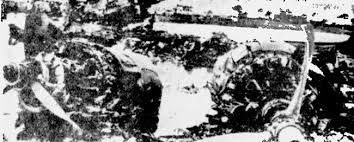Crash of a Piper PA-31-310 Navajo in Fort Pierce
Date & Time:
Feb 6, 1982 at 2115 LT
Registration:
N747CE
Survivors:
Yes
Schedule:
Montego Bay - Fort Lauderdale
MSN:
31-673
YOM:
1970
Crew on board:
1
Crew fatalities:
Pax on board:
1
Pax fatalities:
Other fatalities:
Total fatalities:
0
Aircraft flight hours:
5211
Circumstances:
The aircraft crashed at night near a private strip in marginal weather conditions. The gear was found in the up position, the right engine was broken off, the nose section was crushed back to the windshield, and both propellers were bent and twisted. About 1,300 lbs of marijuana was found on board.
Probable cause:
Occurrence #1: in flight collision with terrain/water
Phase of operation: unknown
Findings
1. (f) stolen aircraft/unauthorized use - performed - pilot in command
2. (f) light condition - dark night
3. (f) weather condition - low ceiling
4. (c) vfr flight into imc - continued - pilot in command
5. (c) altitude - misjudged - pilot in command
6. (f) visual/aural perception - pilot in command
Phase of operation: unknown
Findings
1. (f) stolen aircraft/unauthorized use - performed - pilot in command
2. (f) light condition - dark night
3. (f) weather condition - low ceiling
4. (c) vfr flight into imc - continued - pilot in command
5. (c) altitude - misjudged - pilot in command
6. (f) visual/aural perception - pilot in command
Final Report:


